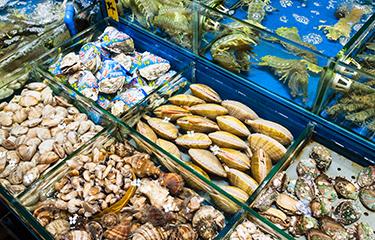China has announced a partial lifting of its ban on Japanese seafood imports, marking a significant development in trade relations between the two countries. The move comes after years of restrictions imposed following safety concerns linked to the Fukushima nuclear disaster in 2011. This latest decision allows certain Japanese seafood products to enter the Chinese market under specific conditions, signaling a cautious step toward normalizing bilateral trade in this sector.
China Eases Restrictions on Japanese Seafood Imports Amid Health Concerns
After months of stringent controls, Chinese authorities have decided to ease restrictions on seafood imports from Japan, signaling a significant shift in trade relations. This decision comes amidst ongoing concerns about the safety of Japanese marine products following environmental incidents in the region. Under the revised measures, only select seafood items that meet enhanced safety protocols will be permitted, reflecting a cautious yet progressive approach to the reopening of trade channels.
Key points of the new import policy include:
- Resumption of imports for species with consistently low radiation levels.
- Mandatory certifications and rigorous testing procedures prior to shipment.
- Ongoing cooperation between Chinese and Japanese health agencies to monitor food safety.
| Seafood Category | Status | Testing Frequency |
|---|---|---|
| Shellfish | Allowed | Weekly |
| Salmon | Restricted | Biweekly |
| Crustaceans | Allowed | Weekly |
| Seaweed | Under Review | Monthly |
Implications for Trade Relations and the Seafood Industry in Japan and China
The partial lifting of the ban on Japanese seafood imports signals a cautious thaw in trade tensions between China and Japan, potentially paving the way for improved diplomatic and economic relations. This move not only restores a degree of market access for Japanese exporters but also indicates China’s willingness to adopt a more flexible stance amid ongoing geopolitical challenges. For Japan’s seafood industry, renowned for its high-quality products and innovation, this development offers a vital opportunity to regain lost revenue streams and rebuild trust with one of its largest consumers.
Key factors shaping the renewed trade dynamics include:
- Gradual resumption of exports from select prefectures, focusing on safer, rigorously inspected seafood products.
- Increased collaboration between Japanese regulatory bodies and Chinese import agencies to ensure compliance and safety standards.
- Potential ripple effects on the Asia-Pacific seafood market, with competitors adjusting strategies in response to shifting availability.
| Aspect | Implication |
|---|---|
| Trade Volume | Partial recovery forecasted at 40-60% |
| Market Confidence | Improvement linked to transparency and safety assurances |
| Industry Adaptations | Increased investment in compliance technology |
Experts Advise Monitoring Quality Standards to Ensure Safe Import Resumption
Industry specialists stress the importance of vigilant oversight as China cautiously reinstates imports of Japanese seafood. With the reopening marked by strict regulatory evaluations, maintaining rigorous quality benchmarks is essential to preventing potential health hazards and ensuring consumer trust. Authorities emphasize that routine inspections and transparent reporting must become standard practice, particularly in areas prone to contamination concerns.
Key recommendations from experts include:
- Implementing comprehensive testing protocols for radioactive substances and banned chemicals.
- Enforcing traceability systems for all imported seafood consignments to guarantee origin authenticity.
- Collaborating with international regulatory bodies for harmonized safety standards.
- Continuous training for inspection personnel to stay updated with evolving risk factors.
| Quality Parameter | Recommended Threshold | Frequency of Testing |
|---|---|---|
| Radioactive Isotopes | Below 100 Bq/kg | Every shipment |
| Heavy Metals | Within safe consumption limits | Monthly random sampling |
| Bacterial Contamination | Undetectable levels | Bi-weekly |
In Retrospect
The partial lifting of the ban on Japanese seafood imports marks a significant development in China-Japan trade relations, signaling a cautious step toward easing tensions that have impacted bilateral economic ties. While the move may open new avenues for cooperation, both sides are likely to remain vigilant amid ongoing political sensitivities. Observers will be watching closely to see how this adjustment affects the broader landscape of regional commerce and diplomacy in the months ahead.




